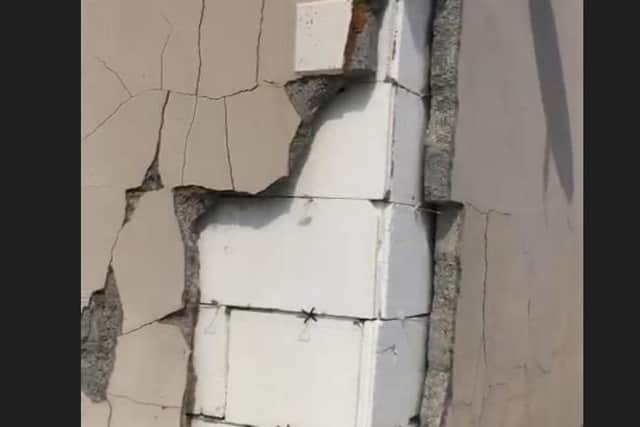Defective concrete blocks are failing ‘because of pyrrhotite and not mica’
and live on Freeview channel 276
The article was published today, Wednesday, in the number one ranked journal internationally for Building and Construction, Cement and Concrete Research.
The research published by Dr Andreas Leemann, Prof. Barbara Lothenbach, Dr Beat Münch of Empa’s Laboratory for Concrete & Asphalt, Switzerland, Professor Paul Dunlop, School of Geography and Environmental Sciences, Ulster University, and Thomas Campbell, T.A Group, Ireland has been described as the first internationally peer reviewed article that provides clear scientific evidence that defective concrete blocks in Donegal are failing as a result of internal sulfate attack directly connected to the presence of highly unstable pyrrhotite, and not the mica freeze-thaw process, as was proposed by a government report published in 2017 and incorporated into the National Standards Authority of Ireland (NSAI) testing and remediation standard I.S.464.
Advertisement
Hide AdAdvertisement
Hide AdProfessor Paul Dunlop from Ulster University stated that ‘this new scientific evidence is important for the Government officials and policy makers who are dealing with the defective concrete block crisis to ensure science based solutions are at the heart of government solutions for affected homeowners’.


"Its publications is also timely for the NSAI who have been calling for rigorous, independently peer reviewed scientific data for their ongoing review of I.S. 465. In addition, it provides scientific information for the National Building Control and Market Surveillance Office who are tasked with market surveillance about the obvious risks for concrete failure when aggregates containing pyrrhotite are used and reinforces the need for robust surveillance of the extraction industry and concrete manufacturers,” Professor Dunlop added.
Campaigners have hailed the findings as significant for a number of reasons, including that it is the first internationally peer reviewed science article accepted for publication that ‘clearly describes the primary failure mechanism of defective concrete blocks used to build homes in Donegal’, and ‘uses rigorous scientific methodologies to investigate and describe this failure mechanism for the first time in detail and outlines why mica cannot be the cause of concrete block failure in Donegal homes.’